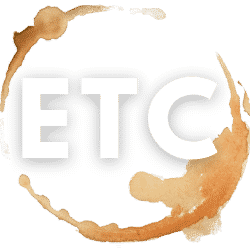Harnessing Psychology for Peak Performance: The Role of Executive Coaching

Executive Coaching with Mel Reyes
In the realm of executive coaching, the psychological principles of cognitive dissonance, Cognitive Behavioral Therapy (CBT), and other techniques stand out as powerful tools for facilitating personal and professional growth.
These approaches are not only grounded in science but have also been empirically validated to help individuals overcome limiting beliefs, champion their lives, elevate their teams, and make incremental improvements each day.
Corporate leadership, executives, and so many others often face immense pressure to perform, innovate, and lead with unwavering confidence.
However, beneath the surface of success, many grapple with limiting beliefs that can hinder their potential. Executive coaching emerges as a transformative tool in this context, employing psychological techniques such as cognitive dissonance, cognitive-behavioral therapy (CBT), and other strategies to foster personal growth, enhance leadership capabilities, and drive organizational success.
This article explores how these techniques can be applied in executive coaching to foster transformative change in their clients, overcome limiting beliefs, champion personal and professional lives, elevate teams, and make incremental improvements every day. All of which are supported by scientific references to underscore their effectiveness.
 Cognitive Dissonance in Executive Coaching
Cognitive Dissonance in Executive Coaching
Cognitive dissonance, a concept introduced by Leon Festinger in 1957, describes the discomfort experienced when holding two or more conflicting cognitions beliefs simultaneously (Festinger, 1957). In executive coaching, this principle is leveraged to challenge and ultimately change limiting beliefs. Executive coaches use this principle to help clients recognize and resolve inconsistencies between their beliefs and behaviors. For example, a leader might believe in the importance of work-life balance but consistently work late hours, neglecting personal time. An executive coach can highlight this dissonance, encouraging clients to align their actions with their values, thus fostering a more balanced lifestyle. By creating situations where executives confront the contradictions between their actions and their self-limiting beliefs, coaches can induce a psychological discomfort that motivates change.
Examples of Application:
- An executive might believe they are not a natural leader despite holding a leadership position and receiving positive feedback. A coach might prompt them to reflect on their achievements and the positive feedback, creating cognitive dissonance. This discomfort can lead the executive to reassess and eventually discard the limiting belief, embracing a more empowered self-view.
- Challenging Limiting Beliefs: Coaches can use cognitive dissonance to challenge leaders' limiting beliefs about their capabilities, prompting them to take actions that reflect their true potential and values.
 Cognitive Behavioral Therapy (CBT) Techniques
Cognitive Behavioral Therapy (CBT) Techniques
CBT is a short-term, goal-oriented psychotherapy treatment that takes a hands-on, practical approach to problem-solving. CBT, a widely recognized form of psychotherapy, focuses on identifying and challenging negative thought patterns and behaviors. Executive coaches use CBT techniques to help clients recognize how their thoughts affect their emotions and behaviors, particularly around leadership and decision-making. Its goal is to change patterns of thinking or behavior that are behind people's difficulties and so change the way they feel (Beck, 1979). In executive coaching, CBT techniques are adapted to help clients identify and challenge negative thought patterns that limit their effectiveness as leaders.
Example: Reframing Negative Thoughts
- Coaches use CBT to help clients reframe negative thoughts into more positive, productive beliefs. This could involve transforming a belief from "I can't handle this project" to "I have successfully managed similar challenges before and can apply those learnings here."
- An executive struggling with imposter syndrome might habitually think, "I'm not qualified for my role." Through CBT techniques, a coach can help them identify and challenge this thought, encouraging them to reframe it to something more positive and realistic, such as, "I have earned my position through hard work and success."
Other Psychological Techniques in Coaching
Beyond cognitive dissonance and CBT, executive coaches employ a variety of other techniques to promote growth and change, including mindfulness, motivational interviewing, and positive psychology interventions. These techniques can help executives develop greater self-awareness, foster resilience, and cultivate a growth mindset.
Mindfulness and Emotional Intelligence for Emotional Regulation
Coaches often incorporate mindfulness practices to improve leaders' emotional intelligence, helping them become more aware of their emotions and how they influence their behavior and decision-making.
Practicing mindfulness can help executives manage stress and emotional reactions, enhancing decision-making and leadership presence. A coach might introduce mindfulness exercises to help a client become more aware of their thoughts and emotions, allowing them to respond more effectively in high-pressure situations.
Incremental Improvements Through Daily Practice (Kaizen)
The power of executive coaching lies not only in transformative insights but also in fostering daily habits that lead to incremental improvement. Coaches encourage clients to set specific, actionable goals, and engage in regular self-reflection and practice to develop new skills and behaviors. Setting specific, measurable, achievable, relevant, and time-bound (SMART) goals helps leaders focus on achievable outcomes and track their progress.
Example: Daily Goal Setting
- An executive coach might work with clients to set daily leadership goals, such as providing positive feedback to team members or delegating more effectively. These small, consistent actions contribute to significant improvements over time.
Other Techniques for Improvement
Beyond cognitive dissonance and CBT, executive coaches employ a variety of other strategies to support their clients, including Feedback Loops. With Feedback Loops, regular feedback sessions between the coach and the client help identify progress and areas for further development, encouraging continuous improvement.
 Conclusion
Conclusion
Executive coaching, through the application of cognitive dissonance, CBT, and other targeted techniques, offers a robust framework for individuals to overcome limiting beliefs, champion their personal and professional lives, and foster an environment of continuous improvement. By grounding their practices in scientifically validated methods, executive coaches can facilitate profound and lasting change, empowering leaders to achieve their fullest potential.
By leveraging these insights and methodologies, executive coaching not only enhances individual leadership capacities but also contributes to the cultivation of high-performing, resilient teams capable of navigating the complexities of today's business landscape.
Reference List
- Festinger, L. (1957). A Theory of Cognitive Dissonance. Stanford University Press.
- Beck, A.T. (1979). Cognitive Therapy of Depression. Guilford Press.
- Locke, E.A., & Latham, G.P. (2002). Building a practically useful theory of goal setting and task motivation. American Psychologist.
- Kabat-Zinn, J. (1994). Wherever You Go, There You Are: Mindfulness Meditation in Everyday Life. Hyperion.
Core services: Keynote Speaker, Personalized Executive Coaching, Group Masterminds Sessions, and Executive Leadership Training



 Executive Coaching & Accountability Sessions
Executive Coaching & Accountability Sessions